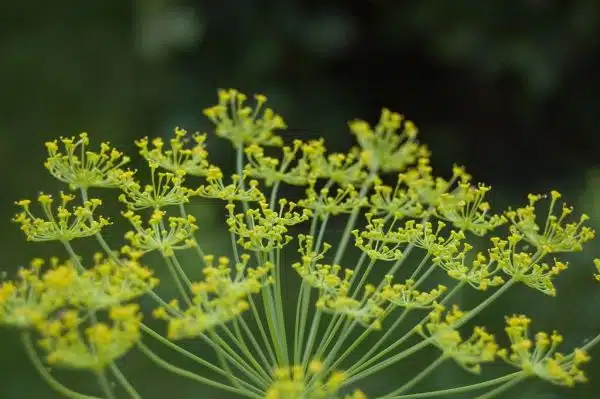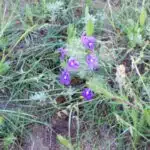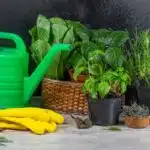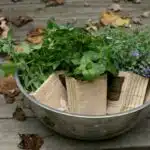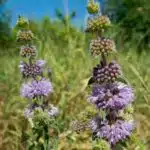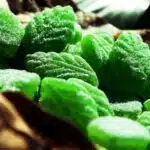The world of herbs is vast and diverse, offering a wide range of flavors, scents, and medicinal properties. While some herbs thrive in partial shade or full shade conditions, others require ample sunlight to grow and flourish. In this article, we will explore the best nine herbs that can grow in full sun conditions.
Whether you’re an avid gardener or just starting out, it’s important to know which herbs are best suited for your garden’s specific climate and conditions. By selecting the right plants for your garden, you can ensure optimal growth and yield while minimizing chances of disease or pest infestation. So if you’re looking to add some flavor and fragrance to your outdoor space while also serving others with fresh herbs from your garden, read on to discover the nine best herbs that grow in full sun.
Understanding The Importance Of Sunlight For Herb Growth
Herbs are an excellent addition to any garden or kitchen. These plants offer a wide range of benefits, from adding flavor to your dishes to providing natural remedies for various ailments. However, growing herbs requires specific conditions for the best results, and one of the most important factors is sunlight. Understanding the importance of sunlight for herb growth can help you cultivate a thriving herb garden.
Sunlight plays a vital role in photosynthesis, the process by which plants produce food. During this process, plants convert sunlight into energy that they use to grow and develop. Herbs require at least six hours of direct sunlight each day to thrive. When herbs receive adequate sunlight, they develop strong stems and healthy leaves, making them more resistant to pests and diseases.
Moreover, proper exposure to sunlight also enhances the quality and flavor of herbs. Sunlight helps stimulate essential oils production in herbs that contribute significantly to their aroma and taste. Therefore, it is crucial to place your herb garden where it can receive full sun exposure throughout the day. If you live in an area with limited direct sunlight or space constraints, consider using containers or raised beds that you can move around as needed.
Basil is one example of a sun-loving herb with versatile culinary uses. This herb thrives in warm temperatures and bright light conditions, making it ideal for outdoor gardens during summer months. Basil’s fresh aroma and sweet taste make it perfect for enhancing salads, sauces, soups, and other dishes. In the next section, we will explore some tips on how to grow basil successfully in full sun conditions while discussing its unique characteristics that make it a valuable addition to any herb garden.
Basil: A Sun-Loving Herb With Versatile Culinary Uses
Basil is a popular herb that thrives in full sun. Its versatility has made it a favorite among horticulturists and culinary enthusiasts alike. Basil can be grown indoors or outdoors, but it does best when exposed to ample sunlight for at least six hours per day. Growing techniques include starting from seed, transplanting seedlings, and pruning to promote growth.
Culinary pairings for basil are endless, making it one of the most versatile herbs in the kitchen. It is commonly used in Italian dishes such as pesto and caprese salad. Basil also pairs well with tomatoes, mozzarella cheese, garlic, and olive oil. Additionally, basil can add a fresh and fragrant taste to soups, stews, and roasted vegetables.
Incorporating basil into your garden or kitchen routine can add an enjoyable element to your daily life. Whether used fresh or dried, basil’s unique flavor profile adds depth and complexity to any dish. With its easy-to-grow nature and diverse culinary pairings, basil is a must-have herb for any horticulturist or food lover looking to elevate their creations in the kitchen.
Transition: Now that we’ve explored the many benefits of growing basil in full sun, let’s take a look at another hardy perennial with fragrant leaves and flowers – rosemary.
Rosemary: A Hardy Perennial With Fragrant Leaves And Flowers
One example of a herb that thrives in full sun is Rosemary. This herb is native to the Mediterranean region and has been used for various purposes for centuries. Its leaves have a distinct aroma and taste, making it a popular ingredient in many culinary dishes.
Growing techniques for rosemary are relatively easy, as the plant can tolerate drought and poor soil conditions. It prefers well-drained soil and should be watered only when the top inch of soil becomes dry. Pruning is also essential to encourage bushier growth and maintain its shape.
Aside from its culinary applications, rosemary has also been used for medicinal purposes. Its leaves contain antioxidants that help boost the immune system and protect against inflammation. In traditional medicine, rosemary has been used to alleviate headaches, improve digestion, and relieve muscle pain.
Transitioning into the subsequent section about thyme: Thyme is another herb that grows well in full sun. This low-maintenance herb has been used for centuries in cooking and herbal medicine due to its aromatic properties and medicinal benefits.
Thyme: A Low-Maintenance Herb With Medicinal Benefits
Thyme (Thymus vulgaris) is an aromatic herb that is relatively easy to cultivate in full sun and well-drained soil. This herb is known to have antiseptic, antifungal, and antibacterial properties and has been used for medicinal purposes since the time of ancient Greece. In the kitchen, thyme is a versatile herb that can be used to flavor dishes as well as teas and other beverages. For cultivation, thyme prefers full sun and well-drained soil and can be grown from both seeds and cuttings. It should be watered regularly but not too frequently, allowing the soil to dry out between watering. It can also be propagated by division of the clumps in the spring. When harvesting, it is best to do so in the early morning and use the leaves fresh or dry them for later use.
Cultivation
As a horticulture enthusiast, it’s exciting to cultivate herbs that do not require much attention. Thyme is one of those herbs that can thrive with little maintenance, making it a perfect herb for beginners. It’s a low-maintenance herb that can tolerate full sun and well-draining soil.
To ensure the growth of healthy thyme plants, proper soil preparation is crucial. This herb thrives in well-draining soil with a pH range from 6.0 to 8.0. The soil should be loosened and amended with organic matter to increase its water-holding capacity and improve drainage. Watering techniques are also essential in growing thyme plants as they require moderate watering but may not tolerate overwatering.
In conclusion, growing thyme is an excellent way to add flavor to your meals while providing medicinal benefits such as relieving respiratory problems and reducing inflammation. With minimal upkeep and proper soil preparation, anyone can enjoy fresh thyme in their garden or even indoors in pots.
Health Benefits
Thyme is not only a low-maintenance herb but also an excellent source of medicinal benefits. It has been used for centuries for its healing properties, making it a popular herb in traditional medicine. One of the significant benefits of thyme is its ability to relieve respiratory problems such as coughs and bronchitis. The herb’s essential oil contains compounds that help clear respiratory passages, making it easier to breathe.
Besides respiratory problems, thyme has also been shown to have anti-inflammatory properties. The herb contains flavonoids and other compounds that can reduce inflammation in the body, making it beneficial for conditions such as arthritis and sore throats. Additionally, thyme is rich in antioxidants, which can protect the body from damage caused by free radicals.
Incorporating herbs like thyme into your diet can provide numerous health benefits while adding flavor to your meals. Moreover, exposure to sunlight is vital for good health as it helps the body produce vitamin D, which is necessary for strong bones and a healthy immune system. Therefore, growing herbs like thyme that require full sun exposure can be an excellent way to promote both physical and mental well-being.
Cooking Uses
Thyme is a versatile herb that can be used in cooking to add a unique flavor and aroma to dishes. Its leaves have a slightly minty and earthy taste, making it an excellent addition to soups, stews, sauces, and marinades. Thyme pairs well with other herbs such as rosemary, parsley, and sage, giving a pleasant blend of flavors. The herb’s dried leaves can also be used to make tea, which has several health benefits.
Apart from its culinary uses, thyme has been used for centuries in skincare products due to its antiseptic properties. The herb contains thymol, a compound that has antibacterial and antifungal properties that help fight acne and other skin conditions. Additionally, using thyme-infused oil on the skin can help reduce inflammation and redness.
Thyme can also be used in tea blends to provide numerous health benefits. Drinking thyme tea can help boost the immune system due to its high antioxidant content. The tea is also known for its ability to soothe sore throats and alleviate respiratory problems such as coughs and bronchitis. Overall, incorporating thyme into your diet or skincare routine can provide an array of health benefits while adding flavor and aroma to your daily life.
Sage: An Aromatic Herb With Culinary And Medicinal Uses
Sage, scientifically known as Salvia officinalis, is an herb commonly found in Mediterranean regions. Sage is a hardy perennial that grows well in full sun and well-drained soil. The plant produces woody stems and soft, green leaves with a fuzzy texture that gives off a fragrant aroma when crushed.
Sage has been used for centuries for its culinary uses. Its strong, earthy flavor makes it a popular ingredient in many dishes, especially those with meat or potatoes. It is also commonly used as a seasoning for stuffing and sausage. Sage can be used fresh or dried and added to sauces, marinades, and soups to enhance the flavor profile of the dish.
Aside from its culinary uses, sage also has medicinal benefits. It contains compounds with anti-inflammatory properties that can help alleviate pain caused by arthritis and other inflammatory conditions. Sage tea is also known to have soothing effects on sore throats and coughs.
To fully appreciate the versatility of sage in both culinary and medicinal applications, here are three important points worth noting:
- Sage contains antioxidants that help protect against cell damage caused by free radicals.
- Research has shown that sage may improve brain function and memory.
- The essential oil extracted from sage leaves can be used in aromatherapy to promote relaxation and reduce stress.
As we delve deeper into the world of herbs that grow best in full sun, we will now explore oregano: a flavorful herb with antimicrobial properties.
Oregano: A Flavorful Herb With Antimicrobial Properties
As the saying goes, “When in doubt, add oregano.” This flavorful herb is a must-have for any herb garden and is known for its antimicrobial properties. But did you know that oregano has uses beyond just cooking?
Oregano has been used for centuries as a natural remedy for common ailments such as coughs, colds, and sore throats. Its antimicrobial properties make it effective at fighting off harmful bacteria and viruses in the body. Oregano oil can also be used topically to treat skin infections and wounds.
In addition to its medicinal uses, oregano is also a popular ingredient in aromatherapy due to its calming properties. It can be diffused or added to bath water to promote relaxation and reduce stress levels. With all these benefits, it’s no wonder oregano is a staple in many households.
Transitioning into the subsequent section about lavender: A beautiful herb with relaxing aromatherapy benefits, lavender is another must-have herb that grows well in full sun.
Lavender: A Beautiful Herb With Relaxing Aromatherapy Benefits
Lavender is a beautiful herb that is well-known for its relaxing aromatherapy benefits. This herb grows best in full sun and well-draining soil. Lavender flowers are fragrant and come in various shades of purple, pink, and white. These flowers attract pollinators and are often used in perfumes, soaps, and sachets.
One of the most popular uses of lavender is for its essential oil, which has many potential health benefits. Lavender oil is known to have anti-inflammatory, analgesic, and calming effects. It can be used to help alleviate symptoms of anxiety, insomnia, headaches, and even minor burns or insect bites. The oil can be diffused or applied topically after dilution with a carrier oil.
Growing lavender indoors is also possible with proper care and attention. This herb requires bright light for at least six hours a day and prefers cooler temperatures between 60-70°F (15-21°C). Indoor lavender plants should be watered when the top inch of soil feels dry to the touch but not overwatered as this can lead to root rot. With the right conditions, indoor lavender plants can thrive year-round.
Chives: a mildly onion-flavored herb with nutritional value will be the subsequent section topic. Chives are part of the allium family and grow best in full sun with moist soil. They are commonly used as a garnish or added to dishes for their mild onion flavor. In addition to their culinary uses, chives contain vitamins A and C as well as minerals such as calcium and iron.
Chives: A Mildly Onion-Flavored Herb With Nutritional Value
After learning about the relaxing benefits of lavender, it’s time to explore another herb that can add flavor and nutrition to our diet. Chives are a perfect addition to any sunny garden as they require full sun exposure. Not only do they make for great garnishes, but chives have a long history of medicinal use dating back to ancient Greece.
While chives are commonly used in culinary dishes, their uses extend beyond the kitchen. They contain high levels of vitamin C which helps boost immunity and combat inflammation. Chives also have antibacterial properties that can help prevent and treat infections. Additionally, the sulfur compounds found in chives have been shown to improve heart health by lowering cholesterol levels.
Overall, chives are a versatile herb with numerous health benefits. Incorporating them into your daily diet can lead to improved overall well-being. In the next section, we will delve into mint: a refreshing herb with multiple culinary and medicinal benefits that is perfect for those hot summer days.
Mint: A Refreshing Herb With Multiple Culinary And Medicinal Benefits
Mint is an aromatic herb that belongs to the family Lamiaceae. It is known for its refreshing flavor and scent, making it a popular ingredient in many culinary dishes and products such as teas, candies, and syrups. Mint comes in different varieties, including peppermint, spearmint, and chocolate mint. Health benefits associated with consuming mint include improved digestion, reduced inflammation, and relief from headaches.
Growing mint requires full sun exposure and well-drained soil with a pH of 6.0 to 7.0. It is best grown through cuttings or transplants rather than seeds because it has a low germination rate. Mint should also be planted in a container or separate area of the garden to prevent it from spreading uncontrollably due to its invasive nature. Regular pruning is also necessary to promote growth and maintain its compact shape.
In addition to its culinary uses, mint has numerous health benefits due to its high content of antioxidants and anti-inflammatory compounds such as rosmarinic acid and menthol. These properties make it effective in relieving symptoms of indigestion, nausea, irritable bowel syndrome (IBS), and menstrual cramps. Moreover, mint’s refreshing aroma can help reduce stress levels while promoting mental alertness. With its versatility in both culinary and medicinal applications, growing a pot of mint at home can provide not only a flavorful addition to meals but also potential health benefits that can aid in one’s overall well-being.
Transition into subsequent section: Now that we have explored the numerous health benefits associated with consuming mint as well as tips on how to grow this refreshing herb successfully let us turn our attention towards cilantro: a zesty herb with culinary and nutritional value that is commonly used in Mexican cuisine.
Cilantro: A Zesty Herb With Culinary And Nutritional Value
“Variety is the spice of life,” as the adage goes, and cilantro is certainly one way to add spice to any dish. This zesty herb has been used in cooking for centuries, adding flavor to everything from salsa to curries. But cilantro isn’t just delicious – it also offers a variety of health benefits.
Cilantro is often used in traditional medicine practices due to its high nutrient content. It contains vitamins A and K, which are essential for maintaining healthy vision and bone health respectively. Additionally, cilantro contains antioxidants that help protect against cellular damage caused by free radicals. These antioxidants have also been shown to reduce inflammation in the body, which can be beneficial for those with conditions such as arthritis.
Growing cilantro in pots is an easy way to ensure a fresh supply of this versatile herb year-round. Cilantro prefers full sun and well-draining soil, so choose a location that receives at least six hours of direct sunlight per day. Plant seeds about half an inch deep and keep soil evenly moist until seedlings emerge. Once established, cilantro can tolerate some drought but will do best with consistent watering.
Overall, cilantro is a great addition to any herb garden or kitchen. Its uses and benefits are numerous, making it a must-have for anyone interested in healthful cooking and living.”
Conclusion
The herbs that grow in full sun are not only easy to maintain but also offer a range of culinary and medicinal benefits. The sunlight is crucial for the growth and development of these herbs, making them more resilient to pests and diseases. Basil, rosemary, thyme, sage, lavender, chives, mint, and cilantro are some of the best herbs that thrive in full sun conditions.
These herbs can be grown in gardens or containers with well-draining soil and regular watering. With their distinct flavors and aromas, they can add depth to various dishes while providing numerous health benefits. So if you’re looking to start an herb garden or simply want to add some greenery to your outdoor space, consider these sun-loving herbs for a fruitful harvest. As gardeners say: “What’s better than fresh herbs straight from the garden?”
Image Credits
- “Herbs” by Denis Defreyne (featured)

